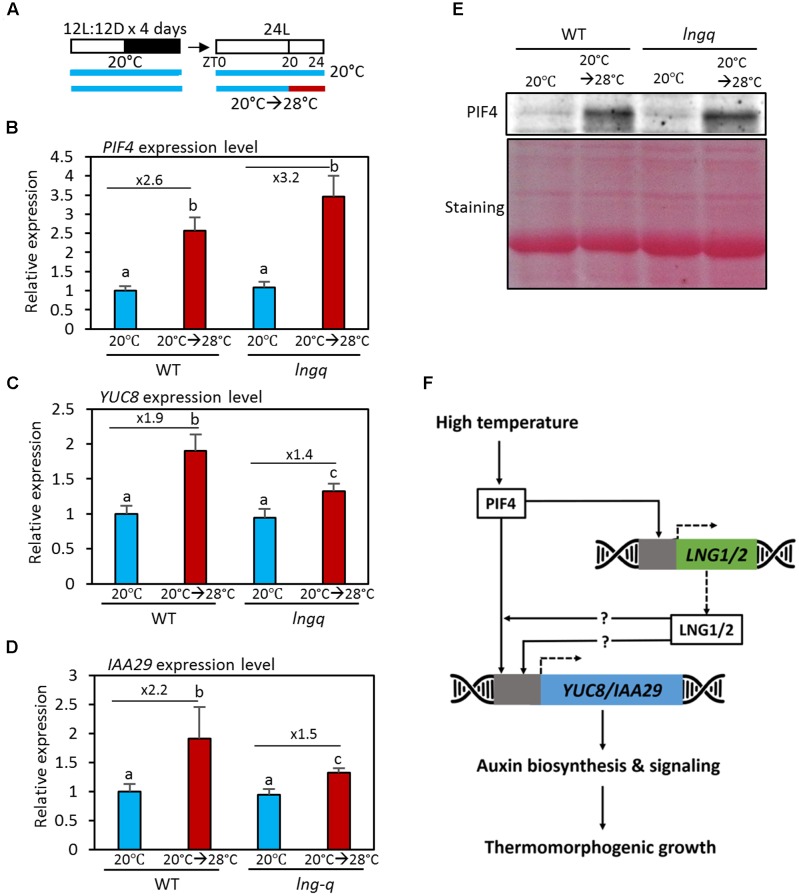FIGURE 4.
The expression of YUC8 and IAA29 is hyposensitive to high temperature in lngq seedlings. (A) Diagram showing plant growth conditions used for the qRT-PCR analyses in (B–D). Seedlings were maintained under 12 h light/12 h dark at 20°C for 4 days, and then transferred to 24 h light conditions. The seedlings were then exposed for 4 h to high temperature (28°C) at ZT20 and harvested for RNA extraction. (B–D) The qRT-PCR analysis of the expression level of YUC8 and IAA29. Gene expression levels were normalized to PP2A and presented as values relative to those of the WT seedlings at 20°C. Error bars indicate standard deviation (SD, n = 3). Numbers indicate ratios of the expression levels (28°C/20°C). Different letters above each bar indicate statistically significant differences (ANOVA and Tukey’s HSD; P < 0.05). (E) Western blotting with anti-PIF4 antibody showed that PIF4 protein levels were increased by high temperatures in both wild type and lngq seedlings. Total protein was extracted from the seedlings grown in the conditions described in (A). Equal loading of samples is shown by Ponceau S staining. (F) A hypothetical model depicting PIF4-LNGs-mediated thermomorphogenic growth. At elevated temperatures, PIF4 transcription factor binds to the promoters of LNG1 and LNG2 as well as auxin-related genes (YUC8 and IAA29), and activate their expression. The increased LNG proteins further activate the expression of YUC8 and IAA29 through unknown mechanisms. The resulting increased auxin biosynthesis and signaling induce thermomorphogenic growth.

